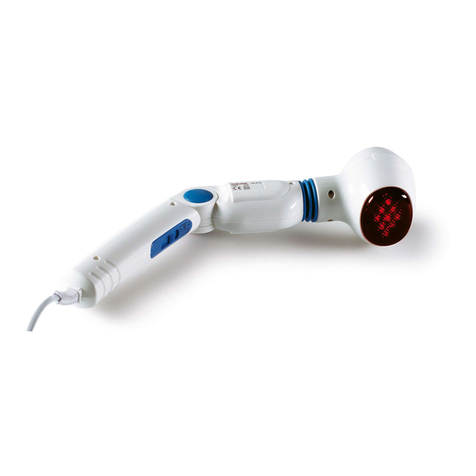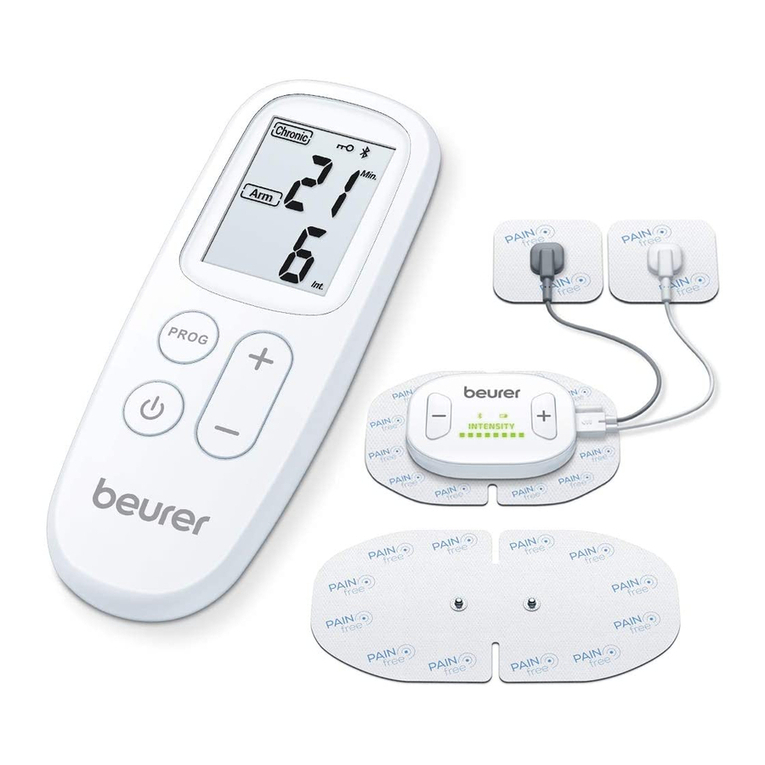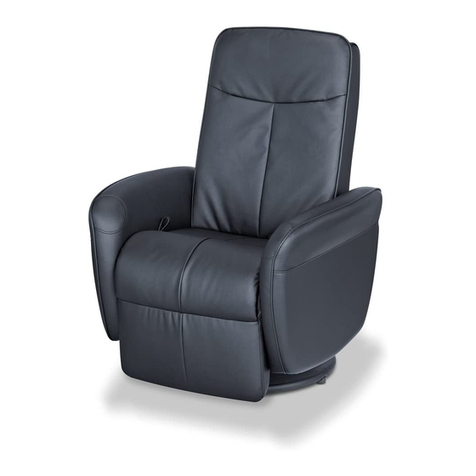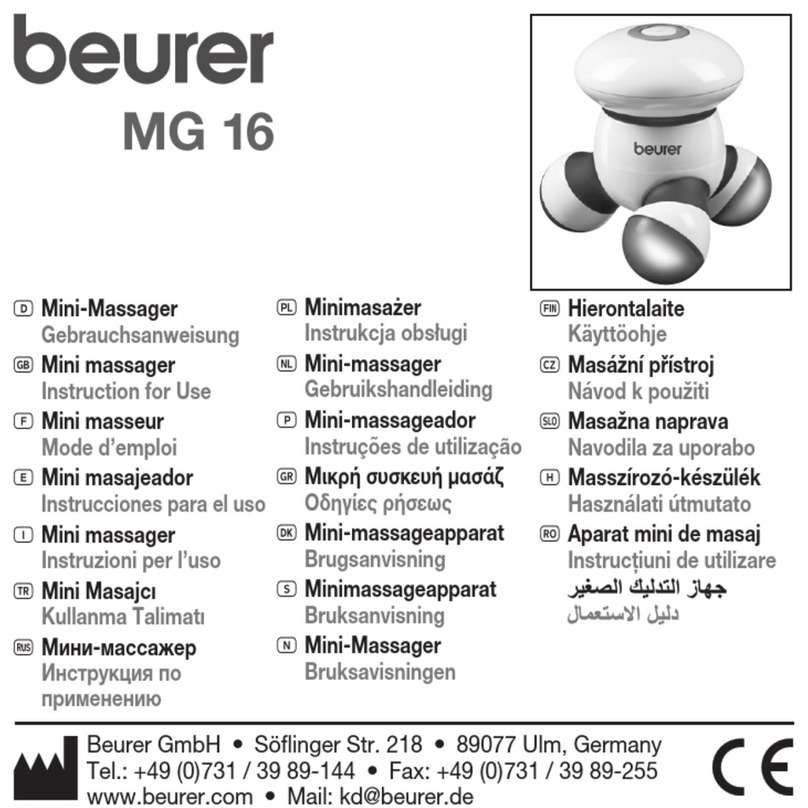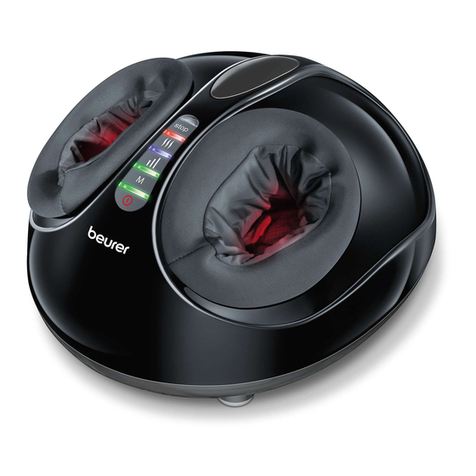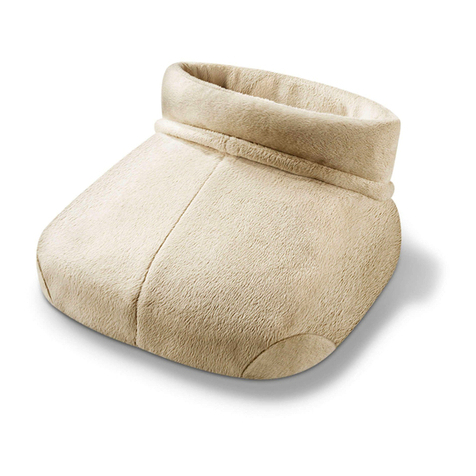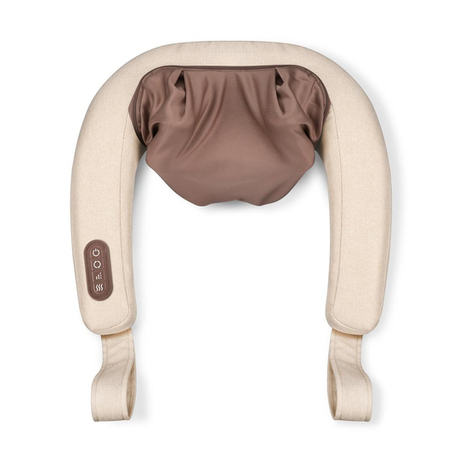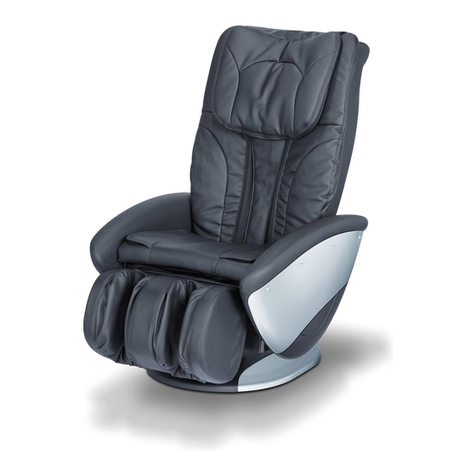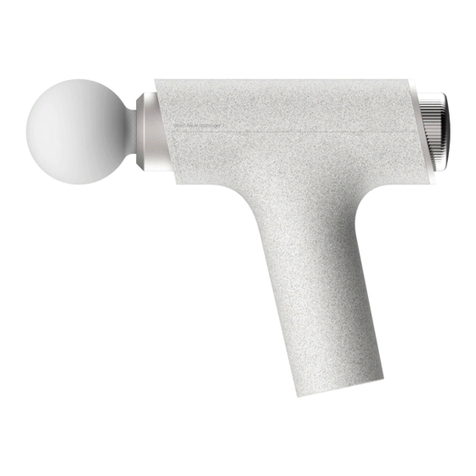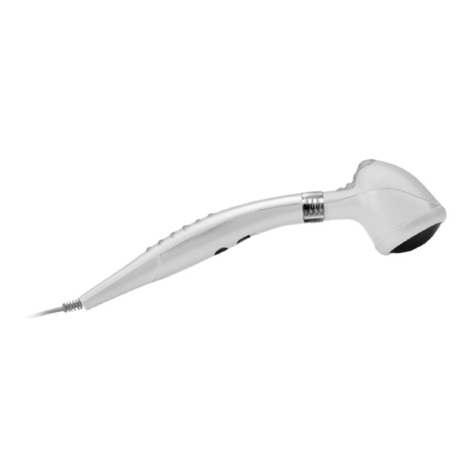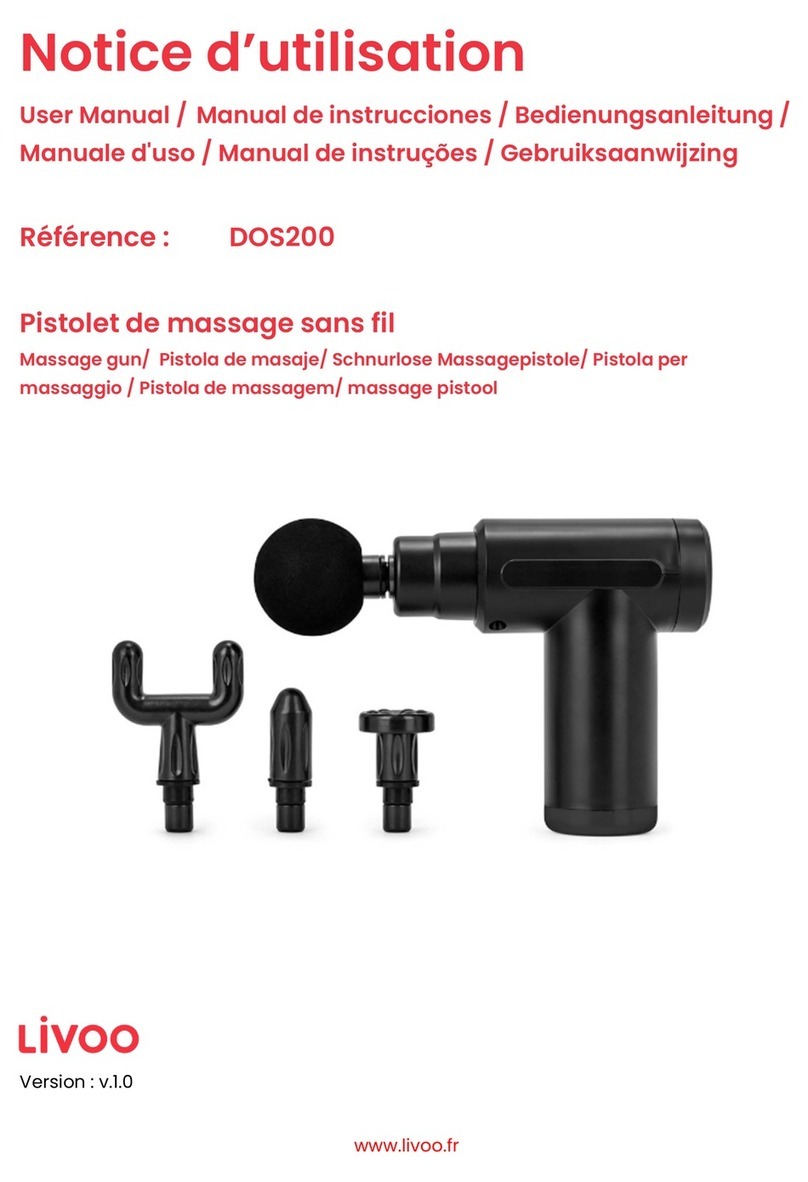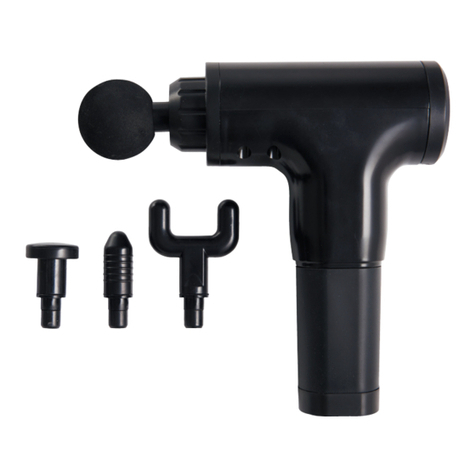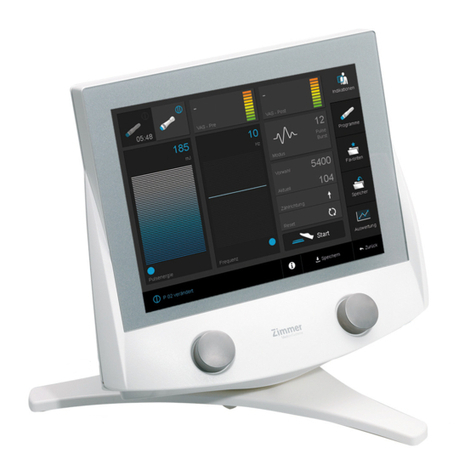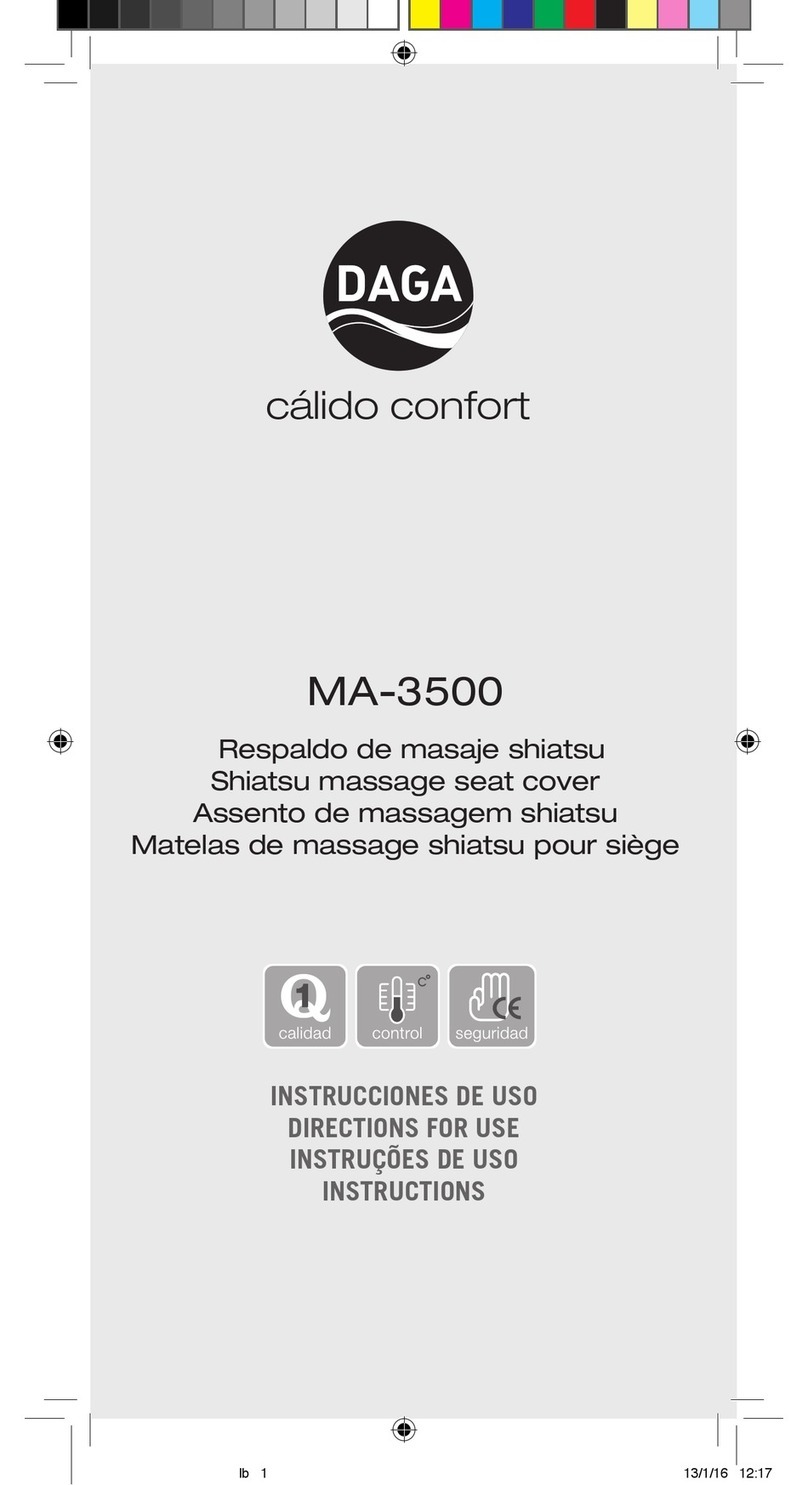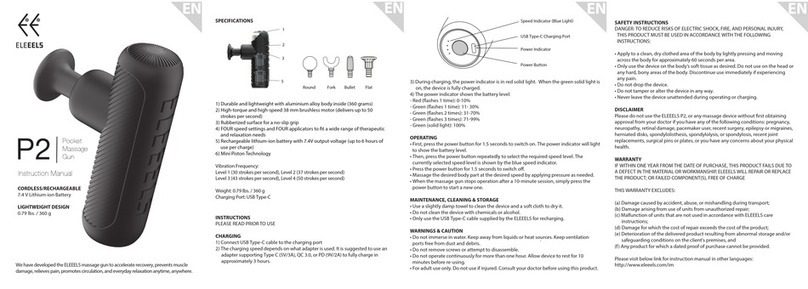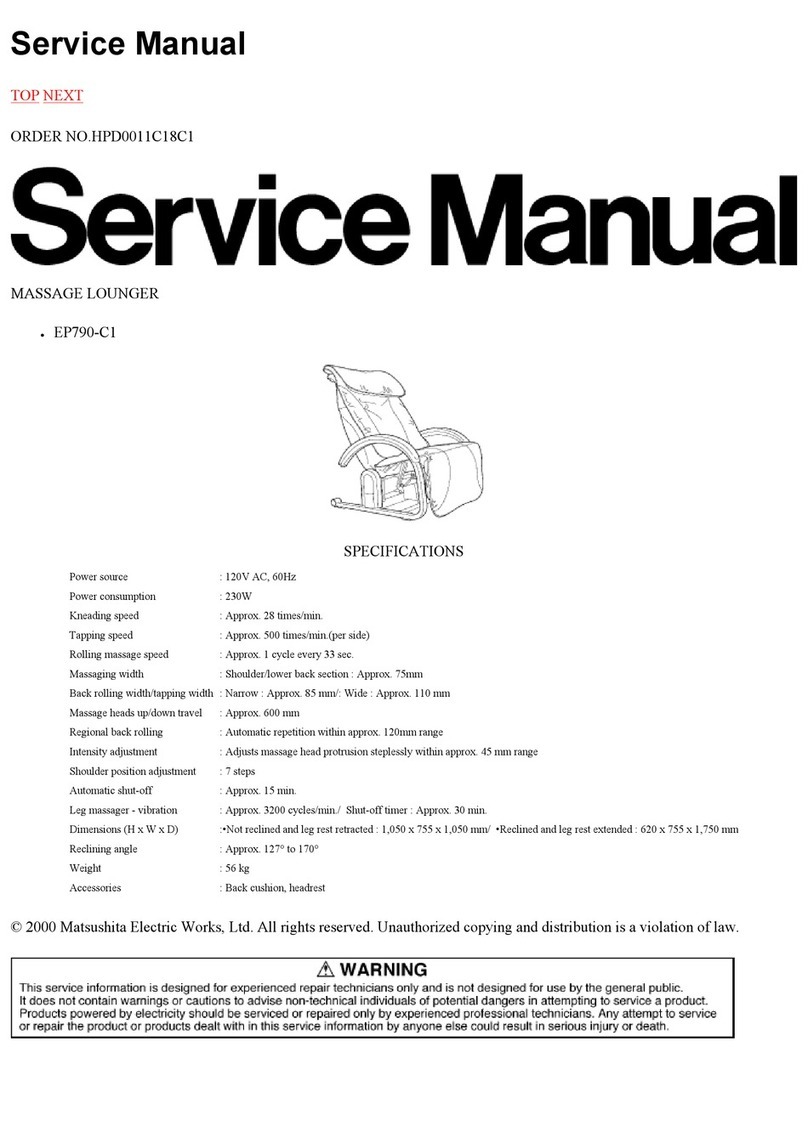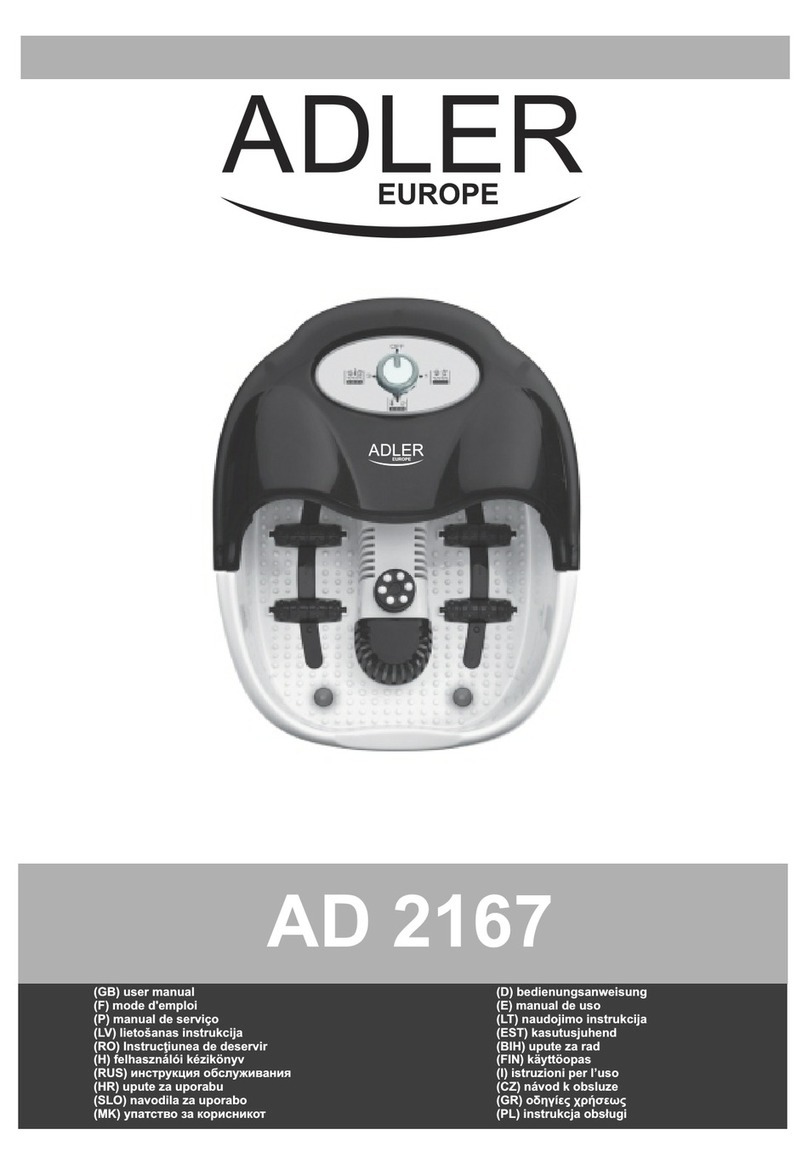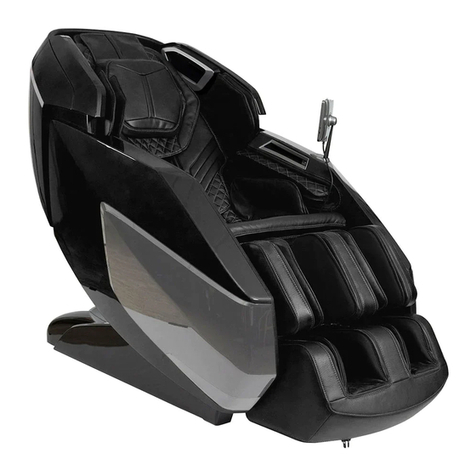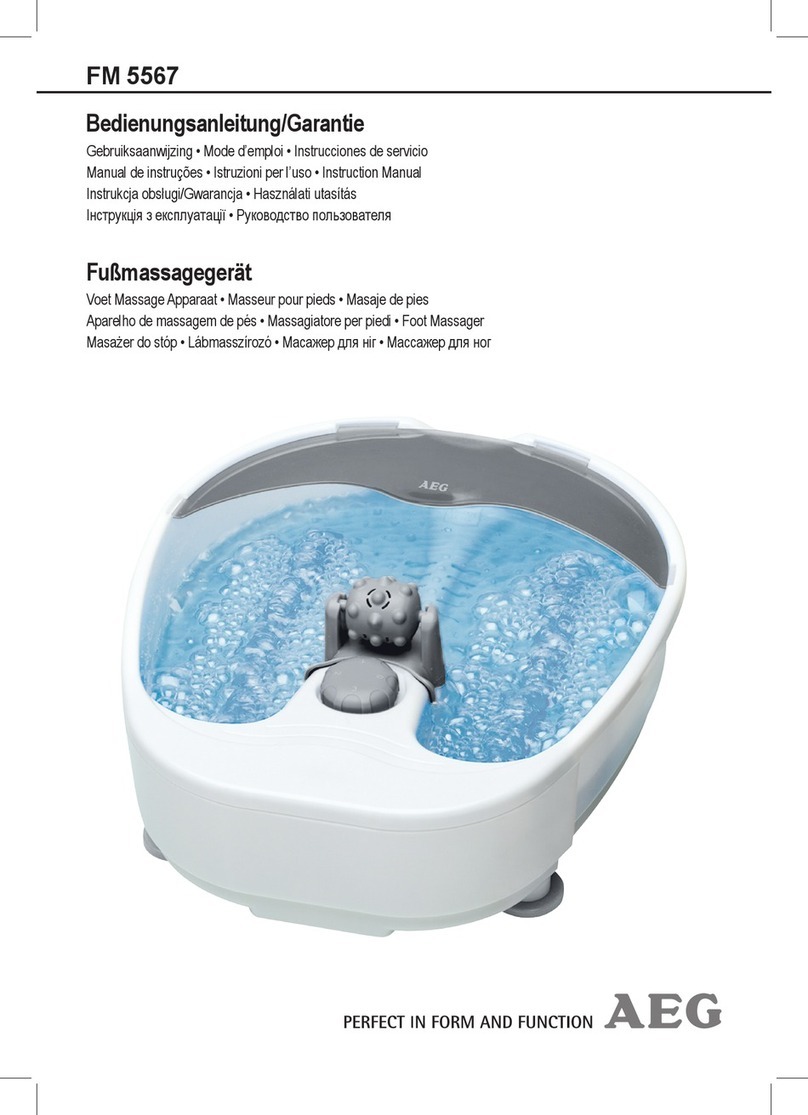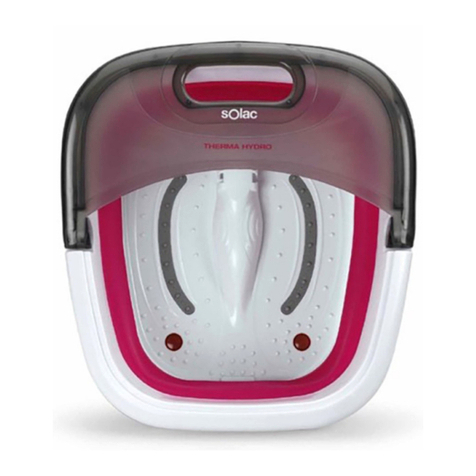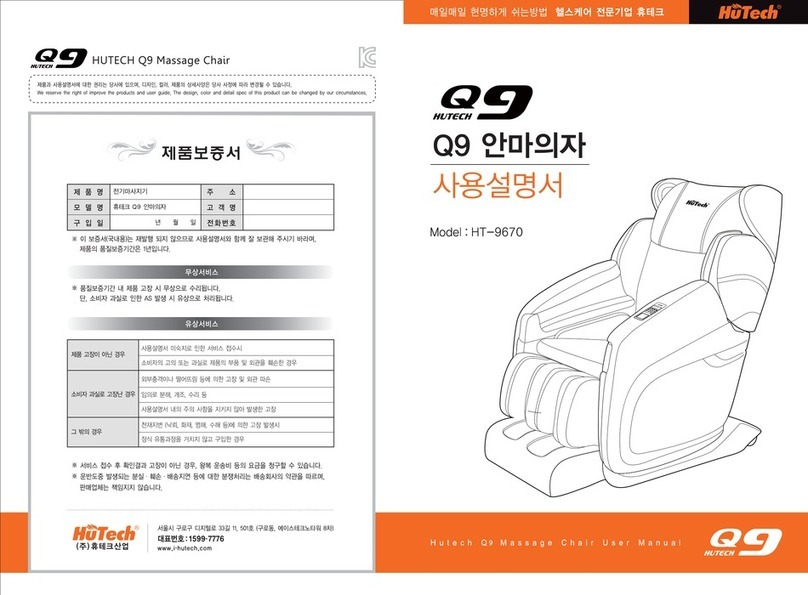
Accuracy
Sensor to measure SpOÿ
Dimensions
Permissible operating conditions +10°C to +40°C, <75 % relative humidity, 700–1060
hPa ambient pressure
Permissible storage conditions -40°C to +60°C, ÿ95% relative humidity,
AFTER 30
L 61 mm x W 36 mm x H 32 mm
Approx. 58 g (including batteries)
Non-invasive measurement of arterial oxygen saturation of haemo globin
and pulse rate in finger
Red light (wave length 660 nm); infra-red (wave length 880 nm); silicon
receiver diode
500–1060 hPa ambient pressure
2x 1.5 V
SpOÿ 0 – 100%,
2 AAA batteries last for approx. 2 years of operation at 3 measure ments
per day (each of 60 seconds).
AAA batteries
Model no.
SpOÿ 70 –100%, ±2%,
Pulse 30 – 250 beats/minute
Measurement method
Pulse 30 – 250 bpm, ±2 beats/minute
Power supply
Measurement range
Weight
Battery life
5 2
1
No altitude sickness (normally)
6. Unit description
8. Operation
10. Maintenance/cleaning
7. Initial use
9. Evaluating measurement results
14. Technical Data
12. Disposal
13. What if there are problems?
11. Storage
Display description
• Protect the batteries from excessive heat.
• Choking hazard! Small children may swallow and choke on batteries. Store the batteries
•
• Do not use rechargeable batteries.
• Always replace all batteries at the same time.
• If the device is not to be used for a long period, take the batteries out of the battery compart
• Do not charge or short-circuit batteries.
• If a battery has leaked, put on protective gloves and clean the battery compartment with a
• Observe the plus (+) and minus (-) polarity signs.
• Use identical or equivalent battery types only.
• Do not disassemble, split or crush the batteries.
Notes on handling batteries • If
your skin or eyes come into contact with battery fluid, flush out the affected areas with
• Protect the pulse oximeter from dust, shocks, moisture, extreme temperatures and explosive
Storage
Dear customer,
WARNING
Note
WARNING
Note:
IMPORTANT
ÿ if the device or the finger you are using is damp.
People with a low oxygen saturation value are more likely to experience the following symptoms: shortness
of breath, increased heart rate, weakness, nervousness and outbreaks of sweating. If oxygen saturation is
known to be chronically diminished, it requires monitoring using the pulse oximeter under medical supervision.
If you have acutely diminished oxygen saturation, with or without the accompanying symptoms, you must
consult a doctor immediately as it could lead to a life-threatening situation. The pulse oximeter is particularly
suitable for patients at risk such as people with heart disease or asthma, but also for athletes and healthy
people who exercise at high altitude (e.g. mountaineers, skiers or amateur pilots).
ÿ during an MRI or CT scan.
ÿ whilst taking a blood pressure measurement on the same arm using a cuff.
ÿ if you are allergic to rubber products.
ÿ on small children or babies.
The Beurer PO 30 pulse oximeter provides a non-invasive measurement of the arterial oxygen saturation
(SpO2 ) and the heart rate (pulse rate). Oxygen saturation indicates the percentage of haemoglobin in
arterial blood that is loaded with oxygen. Therefore it is an important parameter for assessing the respiratory
function. To take a measurement, the pulse oximeter uses two rays of light with differing wavelengths, which
strike the finger inserted inside the housing. A low oxygen saturation value generally indicates underlying
illnesses (respiratory diseases, asthma, heart failure etc.).
Classification IP22, application part type BF
Read these instructions for use carefully. Non-observance of the following information may result in
personal injury or material damage. Store these instructions for use and make them accessible to
other users. Make sure you include these instructions for use when handing over the device to third
parties.
circulation to be evaluated at the measurement site. Rather, they are exclusively used to display
the current visual signal variation at the measurement site and do not enable reliable diagnos
tics for the pulse.
4. Pulse bar
5. Battery level indicator
Finger opening
3. Pulse wave (plethysmographic wave)
Source: Hackett PH, Roach RC: High-Altitude Medicine. In: Auerbach PS (ed): Wilderness Medicine, 3rd edition;
Mosby, St.Louis, MO 1995; 1-37.
Lanyard
holder
2. Pulse rate (value in beats per minute)
Function button
1. Oxygen saturation (value in percent)
WARNING
98 65
Operating
Only use the Beurer PO 30 pulse oximeter on humans to measure the arterial oxygen saturation
(SpOÿ) of haemoglobin and the heart rate (pulse rate). The pulse oximeter is suitable for private
use (at home) as well as for use in the medical sector (hospitals, medical establishments).
AFTER 30
4 3
%SpO2 PRbpm
Problem
Normal range
Altitude
5800-7500 m
• To avoid falsifying the measuring result, there should not be any strong light sources (e.g. fluorescent lamps
or direct sunlight) in the immediate vicinity of the pulse oximeter. • People with low blood pressure, who
suffer from jaundice or take medication for vascular contraction, may experience incorrect or falsified
measurements.
Observe the warnings and safety notes in
chapterÿ5.
SpOÿ measurement
(oxygen saturation) in %
ÿ on fingers that are too small, as with small children for example (width approx. < 10 mm, thickness < 5
mm).
monitoring.
Very frequent altitude sickness, acclimatisa tion
absolutely essential
3. Close the battery compart ment
lid again.
• For people with cardiac arrhythmia, the measurement values of SpOÿ and the heart rate may be incorrect or the
measurement may not be possible at all.
Solution
<70
• If you are not going to use the pulse oximeter for more than one month, remove both batter ies from the device
to avoid possible leaking.
2. Press the function button.
measurement
values.
Classification/measures to be taken
The following table informs you of the effects of various altitudes on oxygen saturation value and its impact on
the human body. The following table does NOT apply to people with certain pre-existing conditions (e.g.
asthma, heart failure, respiratory diseases etc.). People with pre existing conditions can show signs of illness
(e.g. hypoxia) at lower altitudes.
3500-5800 m
Under no circumstances should you hold the pulse oximeter under water, as this can cause liquid to enter and
damage the pulse oximeter.
The empty, completely flat batteries must be disposed of through specially designated collection boxes,
recycling points or electronics retailers. You are legally required to dispose of the batteries.
The pulse oximeter is
displaying measurement
~90
cordance with CISPR 11, IEC 61000-4-2, IEC 61000-4-3, IEC 61000-4-8) and is subject to particular
precautions with regard to electromagnetic compatibility. Please note that portable and mobile HF communication
systems may interfere with this device. For more details, please contact our Customer Services at the address
indicated.
measured.
Store the pulse oximeter in a dry place (relative humidity ÿ95%). If the humidity is too high it may shorten the
service life of the pulse oximeter or damage it. Store the pulse oximeter in a place where the ambient
temperature is between -40°C and 60°C.
Possible cause
Decreased range: visit to the doctor recommended
Impact on human body
<80
alcohol after each use.
The batteries in the pulse
oximeter are empty.
Fingertip must have the following meas
urements: Width between 10 and 22 mm
Severe hypoxia, only limited length of stay possible
ÿ near flammable or explosive gas mixtures.
1500-2500 m
The serial number is located on the device or in the battery compartment.
• Incorrect measurements are likely for patients who have been administered medical dye in the past or for
those who have abnormal haemoglobin levels. This applies in particular for cases of carbon monoxide
poisoning and methaemoglobin poisoning, which can occur for example from the administration of local
anaesthetics or from an existing methaemoglobin reductase deficiency.
The pulse oximeter begins its
measurement. Do not move
during the measure ment.
The function button on the pulse oximeter has two functions in total:
99-94
Expected SpOÿ value
(oxygen saturation) in %
<90
• Clean the housing and the interior rubber surface with a soft cloth dampened with medical
The codes below are printed on batteries containing harmful substances: Pb = Battery
contains lead,
Batteries not inserted
correctly.
Measurement finger is too
large or too small.
ÿ on fingers that have nail varnish on, are dirty or have a plaster or other dressing on them.
1. Insert the narrow end of the lanyard through
the holder as shown.
Problem
interruptions or
high measurement
value jumps.
ÿ on large fingers that do not fit into the device easily (fingertip: width approx. > 20 mm, thickness >15
mm).
Altitude sickness, acclimatisation recom mended
1. Slide the battery compart ment
lid open.
• Ensure that the finger nail on the finger to be measured is short enough that the fingertip covers the sensor
element in the housing.
Solution
tion button briefly to switch it on.
Cardiac arrhythmia
Critical range Seek medical attention urgently
ies supplied in the pulse
oximeter as shown. Ensure that
the correct battery polarity is
observed.
ible infra-red light in the pulse oximeter are harmful to your eyes.
1. Insert one finger into the
7500-8850 m
• In cases of carbon monoxide poisoning, the pulse oximeter displays a measurement value
• If a low battery status appears on the display of the pulse oximeter, change the batteries.
For environmental reasons, do not dispose of the device in the household waste at the end of its useful
life. Dispose of the unit at a suitable local collection or recycling point.
The pulse oximeter is
not displaying
2500-3500 m
Technical information is subject to change without notification to allow for updates.
Non-observance of the following instructions can lead to incorrect or failed measurements.
Replace the batteries.
Keep your finger, hand and body still during
the measurement.
3. Your measurement values will
appear on the screen after a
few seconds.
93-90
• Switch-on function: When the pulse oximeter is switched off you can hold down the func
Cd = Battery contains cadmium, Hg =
Battery contains mercury.
< 90
that is too high.
2. Draw the other end of the lanyard through the loop
at the narrow end and tighten.
Possible cause
The following table for evaluating your measurements does NOT apply to people with certain pre-existing
conditions (e.g. asthma, heart failure, respiratory diseases) or whilst staying at altitudes above 1500 metres. If
you have a pre-existing condition, always consult your doctor to evaluate your measurements.
Finger, hand or body is
moving.
ÿ on fingers with anatomical changes, oedemas, scars or burns.
2. Place the two batter
Subject to errors and changes
sensory or mental skills or a lack of experience and/or a lack of knowledge, unless they are supervised by a
person who has responsibility for their safety or they receive instructions from this person on how to use the
device. Children should be supervised around the device to ensure they do not play with it.
• Brightness function: To select your desired display brightness, hold down the function but ton for slightly
longer during operation.
• Keep your hand, finger and body steady during the measurement.
ÿ on patients who are not steady at the site of application (e.g. trembling).
Thickness between 5 and 15 mm
When you remove your finger from the pulse oximeter, the device will automatically switch off after approx. five
seconds.
ing medical results.
Immediate, acute danger to life
Do not use high-pressure sterilisation on the pulse oximeter!
Dispose of the device in accordance with EC Directive – WEEE (Waste Electrical and Electronic
Equipment). If you have any questions, please contact the local authorities respon sible for waste disposal.
Insufficient circulation in the
measurement finger.
Seek medical attention.
Therefore do not use the pulse oximeter for longer than approx. 2 hours on one finger.
> 90
To transport the pulse oximeter more easily you can attach a lanyard to the device.
finger opening of the pulse
oximeter as shown and hold it
steady.
Reinsert the batteries. If after reinserting the
batteries correctly there are still no measurement
values displayed, contact customer services.
15. Warranty/service
4. Signs and symbols
3. Getting to know your device
1. Included in delivery
2. Intended use
5. Warnings and safety notes
Notes on electromagnetic compatibility
98 65
454.30_PO30_2020-01-08_04_IM1a_BEU_DE-EN
ENGLISH
Pulse oximeter
%SpO2 PRbpm
• Using the device for long periods may cause pain for people with circulatory disorders.
• This device complies with the EU Directive 93/42/EEC concerning medical devices, the
Medizinproduktegesetz (German Medical Devices Act) and the DIN EN ISO 80601-2-61
standard (Medical electrical equipment – Particular requirements for the basic safety and
essential performance of pulse oximeter equipment for medical use)
• Do not look directly inside the housing during the measurement. The red light and the invis
• Neither of the displays for the pulse wave and pulse bar allows the strength of the pulse or
• The pulse oximeter does not have an alarm function and is therefore not suitable for evaluat
• This device is not intended for use by people (including children) with restricted physical,
• Do not self-diagnose or self-medicate on the basis of the measurements without consulting
your doctor. In particular, do not start taking any new medication or change the type and/or
dosage of any existing medication without prior approval.
• The pulse oximeter displays a current measurement but cannot be used for continuous
• This device conforms with the European standards EN60601-1 and EN60601-1-2 (in ac
• There must not be any nail varnish, artificial nails or other cosmetics on the finger to be
Note
7.1 Inserting the batteries
Function button
Decline in oxygen saturation depending on altitude
IMPORTANT:
Note
IMPORTANT:
7.2 Attaching the lanyard
This product satisfies the require
ments of the applicable Euro pean
and national directives.
Thank you for choosing one of our products. Our name stands for high-quality, thoroughly tested products
for applications in the areas of heat, weight, blood pressure, body tempera ture, pulse, gentle therapy,
massage, beauty, baby and air. Please read these instructions for use carefully and keep them for later use,
be sure to make them accessible to other users and observe the information they contain.
• Check to ensure that the package contains all the parts that should be included in the deliv
Arterial oxygen saturation of
haemoglobin (in percent)
Observe the instructions for use
Device protected against foreign
objects ÿ 12.5 mm and against falling
drops of water
The display orients automatically (vertical format, horizontal format). This ensures that the valu es are easy to
read on the display at all times, regardless of how you hold the pulse oximeter.
Risk of explosion! Never throw batteries into a fire.
Do not dispose of batteries con
taining hazardous substances with
household waste.
The worldwide warranty period is 5 years, commencing from the purchase of the new, unused product from the
seller.
Permissible operating tempera ture
and humidity
• Keep portable RF communication devices (including peripheral equipment, such as antenna cables or
external antennas) at least 30 cm away from all device parts, including all cables in cluded in delivery. Failure
to comply with the above can impair the performance of the device.
provisions of the instructions for use, as well as products that have been opened, repaired or modified by the
buyer or by a service centre not authorised by Beurer; - damage that arises during transport between
manufacturer and customer, or between service centre and customer;
With kind regards,
During the warranty period, should this product prove to be incomplete or defective in functio nality in
accordance with the following provisions, Beurer shall carry out a repair or a replace ment delivery free of
charge, in accordance with these warranty conditions.
this could lead to faulty operation. If, however, it is necessary to use the device in the manner stated, this
device as well as the other devices must be monitored to ensure they are working properly.
• The device is suitable for use in all environments listed in these instructions for use, including
1x PO 30 pulse oximeter, 2x 1.5 V LR03 AAA batteries, 1x Lanyard, 1x Belt bag, 1x These instructions
for use
ery.
%SpOÿ
Alarm suppression
Note on important information
Serial number
The warranty conditions below shall not affect the seller’s statutory warranty obligations which ensue
from the sales agreement with the buyer.
• Under no circumstances should you open or repair the device yourself, as faultless function ality could no
longer be guaranteed thereafter. Failure to comply will result in voiding of the warranty. For repairs, please
contact Beurer customer services or an authorised retailer.
out of the reach of small children.
The following are explicitly excluded from this warranty: -
deterioration due to normal use or consumption of the product;
Beurer GmbH • Soeflinger Strasse 218 • 89077 Ulm, Germany
• Check the pulse oximeter regularly before use to ensure that there is no visible damage to the device and the
batteries are still sufficiently charged. In case of doubt, do not use the device and contact Beurer customer
services or an authorised retailer.
dry cloth.
Permissible storage temperature and
humidity
Warning instruction indicating a risk
of injury or damage to health
Your Beurer team
- products purchased as seconds or as used goods;
If the buyer wishes to make a warranty claim, they should approach their local retailer in the first
instance: see the attached “International Service” list of service addresses.
The buyer will then receive further information about the processing of the warranty claim, e.g. where they can
send the product and what documentation is required.
Application part, type BF
Beurer GmbH, Söflinger Straße 218, 89077 Ulm, Germany (hereinafter referred to as “Beu rer”) provides
a warranty for this product, subject to the requirements below and to the extent described as follows.
A warranty claim shall only be considered if the buyer can provide Beurer, or an authorised Beurer partner,
with - a copy of the invoice/purchase receipt, and - the original product.
IP 22
Disposal in accordance with EC
domestic environments.
materials.
Do NOT use the pulse oximeter
The warranty shall apply without prejudice to any mandatory statutory provisions on liability.
• The use of accessories other than those specifed or provided by the manufacturer of this device can lead
to an increase in electromagnetic emissions or a decrease in the device’s electromagnetic immunity; this
can result in faulty operation.
The warranty only applies to products purchased by the buyer as a consumer and used exclusi vely for personal
purposes in the context of domestic use.
PR bpm Pulse rate (beats per minute)
• The use of the device may be limited in the presence of electromagnetic disturbances. This could result in
issues such as error messages or the failure of the display/device.
www.beurer.com • www.beurer-healthguide.com
• Do not use any additional parts that are not recommended by the manufacturer or offered as
- consequential damage arising from a fault in this product (however, in this case, claims may exist arising
from product liability or other compulsory statutory liability provisions).
CE labelling
water and seek medical assistance.
Safety note regarding potential for
damage to the device/accessories
Directive WEEE (Waste Electrical and
Electronic Equipment)
• Failure to comply with the above can impair the performance of the device.
ment.
Beurer guarantees the perfect functionality and completeness of this product.
- accessories supplied with this product which are worn out or used up through proper use (e.g. batteries,
rechargeable batteries, cuffs, seals, electrodes, light sources, attachments and nebuliser accessories); -
products that are used, cleaned, stored or maintained improperly and/or contrary to the
equipment.
Manufacturer
German law shall apply.
The following symbols are used in these instructions for use, on the packaging and on the type plate for the
device:
• Avoid using this device directly next to other devices or stacked on top of other devices, as
Repairs or an exchange in full do not extend the warranty period under any circumstances.
Machine Translated by Google


